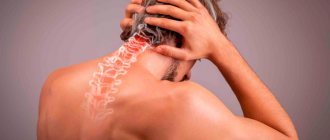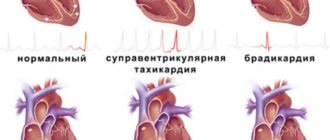In the maze
The vestibular apparatus is an organ of balance that determines the position of our body in space. It is located in the inner ear and has a rather complex structure, similar to a labyrinth, filled with liquid and lined with special cells - vestibular receptors, which are covered with a membrane. Otoliths, small calcium crystals, form on the surface of the membrane. Under certain circumstances, otoliths can “jump” over the natural protection and begin to move freely in the fluid of the inner ear. And then dizziness occurs.
Question and answer What does lack of coordination indicate?
There is another theory according to which hormonal imbalances cause calcium metabolism disorders, and calcium carbonate crystals float freely in the fluid of the inner ear, causing anxiety to patients.
Experts call this type of vertigo “benign paroxysmal positional vertigo” (BPPV). The term BPPV ideally characterizes the disease itself: “benign” indicates the absence of health consequences and possible self-healing (over time, calcium particles can dissolve in the fluid of the inner ear or move into place - and the dizziness will disappear on its own), “paroxysmal” means that the symptoms are paroxysmal in nature, “positional” refers to the occurrence of dizziness when the position of the body or head, or more precisely, the vestibular apparatus in space, changes, and the word “dizziness” characterizes the main symptom of the disease.
What is the noise in your ears and why do you feel dizzy? More details
Diagnosis of nausea, weakness and noise in the head
When visiting a doctor with complaints of dizziness, headache, nausea, weakness, ringing and tinnitus, the patient first receives a preliminary diagnosis. For this purpose, an examination plan is drawn up, which includes the following studies:
- Comprehensive examination by a neurologist. The doctor conducts special coordination tests that distinguish benign paroxysmal positional vertigo from its other varieties, as well as a neurological examination, checking the condition of the cranial nerves, conditioned and unconditioned reflexes. The specialist conducts a detailed survey of the patient, identifying the main complaints, their location and time of occurrence, and connections with chronic diseases.
- General blood test, biochemical blood test, coagulogram. They are carried out to exclude anemia, acute inflammatory and infectious processes in the body, as well as tumor diseases of the blood and lymph. Also, thanks to these studies, the blood lipid profile, the tendency to thrombosis and vascular atherosclerosis are assessed.
- ECG and blood pressure measurement. Studies reveal a connection between the complaints that have arisen and arterial hypertension.
- X-ray, CT and MRI of the brain and spinal cord. MRI examination has advantages over other diagnostic options, as it shows a layer-by-layer image of all scanned areas. This allows you to minimize diagnostic errors, accurately determine the location and size of the pathological focus, and also conduct an examination in the shortest possible time. Magnetic resonance imaging is the method of choice for formations that do not originate from bone tissue, as well as the gold standard for examination in dyscirculatory encephalopathy.
- Ultrasound of cerebral vessels to identify pathological narrowings and blockages by blood clots.
- An audiogram and examination by an otolaryngologist to rule out problems with the inner ear and vestibular apparatus.
- Electroencephalography. Helps detect areas of epileptic activity.
Like on a carousel
The most important symptom of BPPV is short (usually within 1 minute) rotational dizziness. It seems to a person that surrounding objects are spinning around him, sometimes nausea and vomiting occur.
Typically, dizziness with BPPV occurs when the position of the head in space changes (rising from a lying position, bending forward, turning in bed, throwing back the head).
The attack begins suddenly and has no warning signs. Therefore, it is impossible to prevent the first attack. However, if an episode of BPPV occurs, try to remember what preceded it. In the future, try to avoid movements that cause dizziness.
During an attack of BPPV, it is advisable to behave calmly, not lie down, but take an upright position. The attack will stop on its own: usually within a few seconds - 1 minute. After this, you need to consult a doctor to clarify the diagnosis.
Question answer
What folk remedies will help with dizziness?
How will we treat?
If you suspect BPPV, it is best to consult an otoneurologist. These doctors have special techniques for identifying the disease and can conduct a competent examination by doing provocative tests for BPPV. During them, the doctor changes the position of the patient’s body in a special way to understand whether any movements cause an attack of dizziness.
In some cases, if the doctor has the appropriate skills, such tests can be performed by an ENT specialist, neurologist, general practitioner or therapist.
Treatment for BPPV consists of so-called therapeutic and rehabilitation maneuvers. As with provocative tests, the doctor moves the patient’s head, but at the same time has a different goal - not to provoke an attack, but to return the calcium crystals to their place.
Subsequently, such exercises can be performed by the patient himself, but this can only be done after consultation with a specialist, because the technique and frequency of repetitions is determined based on the situation of this particular patient.
But drug support for BPPV, as a rule, is not required. In extremely severe situations, surgical treatment is possible, but this is extremely rarely required!
Vestibular gymnastics. How to cope with dizziness Read more
Usual life
Having once experienced an attack of BPPV, many patients are afraid that it will happen again and create a whole series of artificial restrictions for themselves.
This is absolutely not required. After getting rid of BPPV, you can fly on an airplane, dive, drive, and go to work. By the way, the influence of occupational hazards on the occurrence of BPPV has not been established.
Some patients, on the contrary, try to train the vestibular apparatus with exercises such as bending and rotating the head (on the Internet such gymnastics are often recommended for the prevention of seasickness). But, unfortunately, no training can prevent the occurrence of BPPV, and the tendency to motion sickness in transport is in no way related to this disease. BPPV is a rare case where there are no specific preventive measures. Unless you're spinning around in your office chair!
Causes of dizziness and noise in the head
There are several main reasons that lead to dizziness and tinnitus:
1. Discirculatory encephalopathy. The most common cause, which affects a large percentage of the population and is chronic. Gradual, progressive impairment of cerebral circulation leads to persistent chronic hypoxia of the brain. Lack of oxygen provokes the death of nerve fibers in the brain, which is accompanied by pain, tinnitus, dizziness and a disturbance in general well-being.
2. Osteochondrosis. A common disease with varied manifestations. With osteochondrosis, intervertebral discs undergo degenerative changes. In particular, cervical osteochondrosis causes pain along the spine and is combined with pain in the head and dizziness due to displacement and protrusion of the vertebrae.
Kazieva Aminat Ziyavovna
Neurologist
Rostov State Medical University
Experience since 2012
3. Arterial hypertension. High blood pressure is often accompanied by a specific clinical picture, which is familiar to many hypertensive patients: headache, weakness, flashing spots before the eyes, dizziness and tinnitus. Such unpleasant symptoms are associated with increased blood flow in the blood vessels, which causes increased pressure on the vascular walls and irritation of pain receptors.
4. Cerebrovascular accidents. Strokes are always accompanied by a difficult and long period of rehabilitation, during which the patient may suffer from dizziness, ringing and tinnitus, and headaches.
5. Anemia. A condition in which there is a decrease in the level of hemoglobin in the blood and its saturation with oxygen leads to hypoxia of organs and tissues, which is accompanied by pallor of the skin, dizziness, noise in the ears, head and frequent fainting.
6. Overwork, chronic fatigue syndrome, insomnia and lack of sleep. Lack of proper rest and workload lead to depletion of the body's physiological resources. Malfunctions in the functioning of many organs and systems begin, which are expressed in weakness, apathy, rapid breathing, pre-fainting, tension headaches and objects spinning before the eyes, tinnitus when the eyeballs move.
7. Hypoglycemia. A condition in which there is a sharp drop in blood glucose levels. This occurs with diabetes or with prolonged restriction of carbohydrates in food.
8. Diseases of ENT organs. Diseases of the auditory analyzer, in particular the inner ear, such as Menier's disease, in addition to pain, hearing loss and tinnitus, are accompanied by disruption of the vestibular apparatus due to increased intralabyrinthine pressure.
9. Migraine. A complex neurological pathology that includes a wide range of manifestations from severe headaches, photophobia, tinnitus and nausea, to loss of orientation.
10. Neoplasms of the central nervous system, epilepsy. Tumors that affect the spinal cord or brain, compress the roots of the spinal nerves, lead to nonspecific symptoms such as double vision of objects in front of the eyes, weakness, nausea, vomiting, loss of consciousness and spinning of objects.
11. Surgeries on the brain or spinal cord. The recovery period after severe surgical interventions entails disorders of the central nervous system.
Kazieva Aminat Ziyavovna
Neurologist
Rostov State Medical University
Experience since 2012
12. Hormonal changes in women: pregnancy and menopause. Those cases when dizziness is physiological in nature and is associated with hormonal changes in the body.
13. Traumatic lesions. After open or closed craniocerebral injuries, as well as injuries to the spine, long-term consequences occur in the form of dizziness, noise in the ears and head. This is due to the displacement of soft tissues and meninges when damaged. Such manifestations are temporary.
14. Motion sickness while driving, long hunger strikes, smoking.
To accurately establish the cause of pathological symptoms and eliminate them, the attending physician must conduct a thorough diagnosis.







